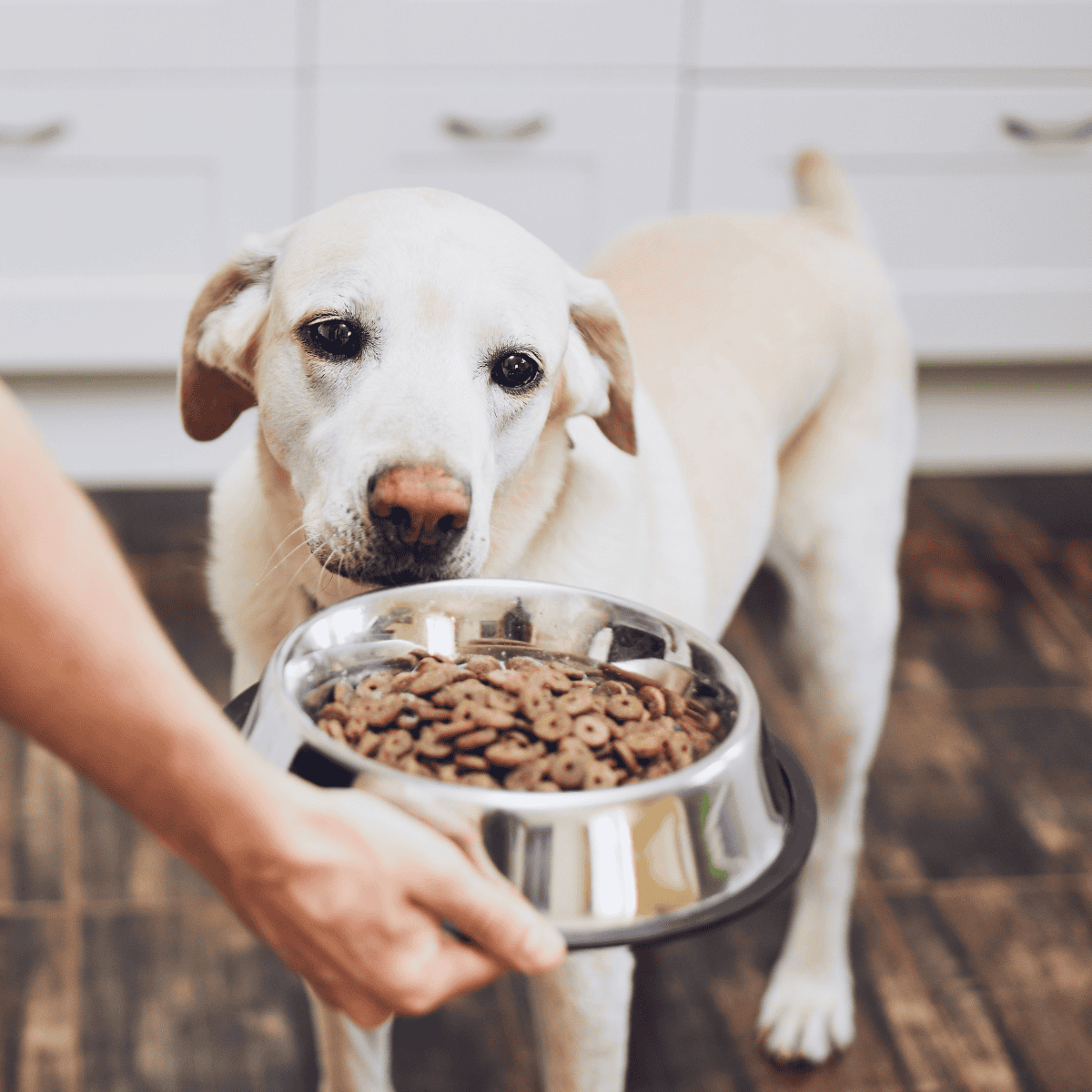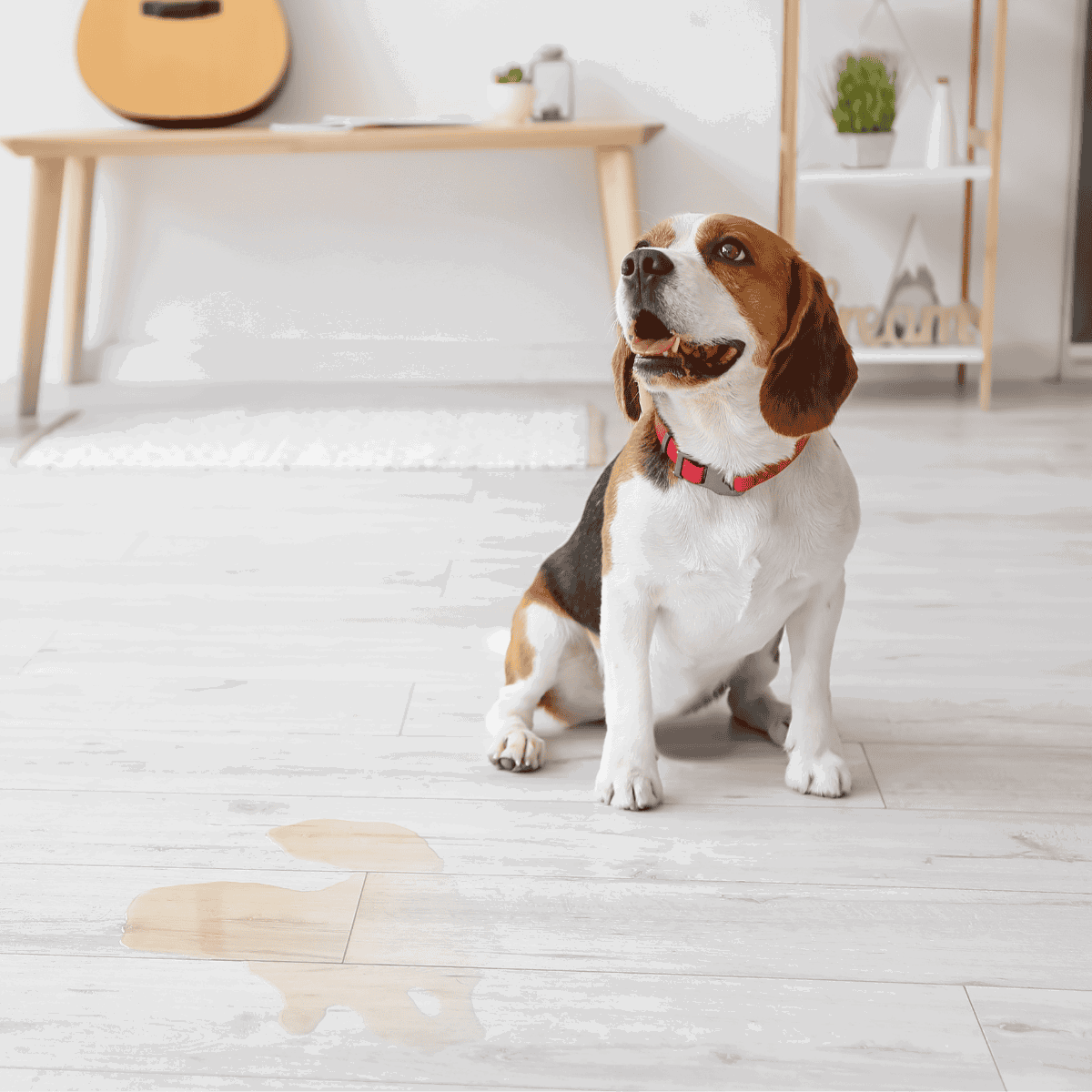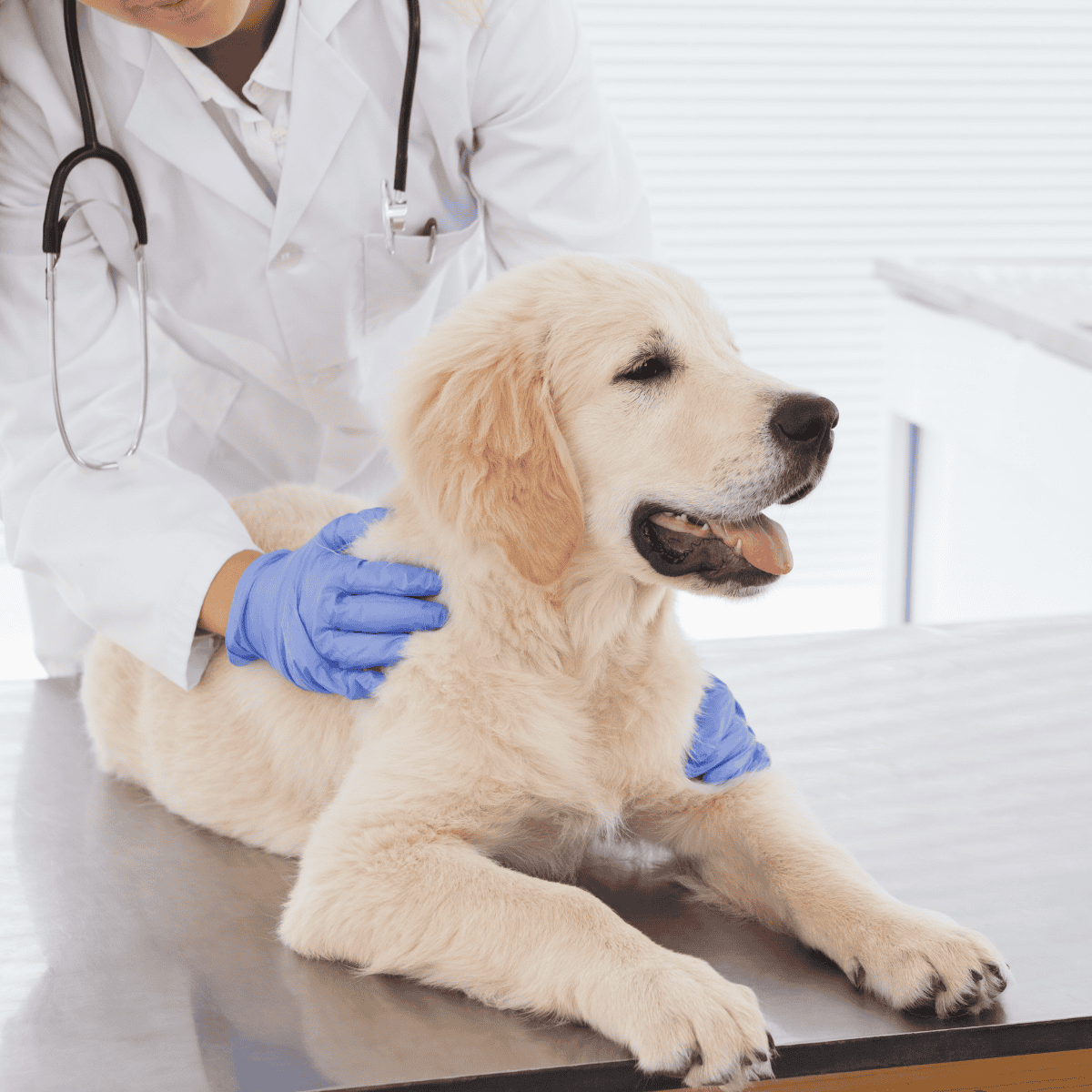Dog Diarrhoea: Causes, Treatment, and Prevention
Dealing with a dog’s upset stomach is never fun. It’s messy, worrying, and can indicate something more serious. Identifying the cause of dog diarrhea early on can prevent further health issues for your pet.

Common causes include changes in diet, stress, or infections. Knowing these factors can help pinpoint the problem. Observing your dog’s behavior and symptoms is key to understanding what might be going wrong.
Treatment varies based on the cause but usually starts with a simple diet adjustment or medication recommended by a vet. Keeping an eye on any other symptoms is crucial to ensure your pet’s health.
What Is Canine Diarrhoea?
Canine diarrhoea is recognized by the passage of loose or watery stools, occurring in large amounts or more frequently than normal.
Types of Canine Diarrhoea
Many pet owners find dealing with canine diarrhoea unpleasant, but veterinarians categorise it into four main types to diagnose the problem accurately.
Osmotic Diarrhoea

Osmotic diarrhoea happens when water is drawn into the gastrointestinal (GI) tract, resulting in large amounts of fluid faeces. This type can occur if a dog consumes a high-fat meal or has lactose intolerance. Symptoms include extremely loose and watery bowel movements. This form of diarrhoea often improves with fasting.
Secretory Diarrhoea

Secretory diarrhoea occurs when the GI tract produces excessive secretions. This can be caused by certain bacterial toxins or viruses. Symptoms include large amounts of watery faeces. Unlike osmotic diarrhoea, fasting typically does not help.
Exudative Diarrhoea

Exudative diarrhoea is linked to damage to the GI lining. Conditions such as ulcerative colitis and some autoimmune diseases can cause this type. Signs to watch for include mucus or blood in the stool.
Rapid Intestinal Transit Diarrhoea
This type of diarrhoea arises when the colon contracts more strongly than usual, causing the contents to move quickly through the GI tract. The result is watery faeces.

By identifying the type of diarrhoea, veterinarians can better diagnose and treat the underlying issue. Understanding the specific type helps with choosing the right treatment plan and deciding whether immediate veterinary care is necessary.

Common Causes of Diarrhoea
Dog diarrhoea can be a common issue and has various causes. Symptoms like watery stools or frequent bowel movements can signal an underlying problem. Several factors may cause diarrhoea in dogs including:
Diet

Sudden changes in diet or food intolerance can upset a dog’s stomach. It may require several days for your dog’s digestive system to completely adjust to a new diet. It is advised that you gradually switch your dog’s food by combining the two equally and then progressively reducing the amount of the initial food.
Infections
Bacteria, viruses, and parasites can lead to digestive issues. Viruses such as parvovirus and bacterial infections are known to cause diarrhea. Parasites like intestinal worms and giardia can also cause stomach problems.

It is important to immediately consult a veterinarian to correctly diagnose the exact cause of diarrhea and give the appropriate treatment depending on the type of infection your dog might have.
Inflammatory Diseases

Inflammatory conditions like inflammatory bowel disease (IBD) can cause long-term stomach upset. Pancreatitis, or pancreas inflammation, is another known cause. Gastroenteritis, which is the inflammation of the gastrointestinal tract, also causes diarrhea together with other symptoms such as vomiting.
Medications

Antibiotics and other drugs might cause diarrhoea as a side effect. It is important to take note of any adverse effects of any drugs your dog might be currently taking. If diarrhea is causing dehydration to your dog, it is important to talk to your veterinarian for possible changes to their treatment regimen.
Stress

Changes in environment or routine can cause stress-related diarrhoea. Stress colitis occurs when inflammation of the large intestine, known as colitis, develops following a stressful situation. For instance, it could happen following a day trip or a visit to a day-care centre. It is also frequently observed following your pet’s visit to the vet or a surgical procedure.
Ingestion of toxins and foreign objects

Toxin ingestion from substances like chocolate, alcohol, or certain essential oils often leads to diarrhoea. Dogs may also consume foreign objects like rocks or socks, resulting in gastrointestinal issues.
Enjoying this read?
We publish this content for free to generate interest in our Premium members' area. By subscribing, you can ask the writer any questions related to pet care and this article, get access to 100+ Premium Pet Care Guides and go Ad-Free with DogFix Premium for $2.99.
Symptoms to Observe
Recognizing symptoms helps in addressing the problem early:
Watery Stools

Loose, liquid stools are a primary sign. A scoring system is used by veterinarians to assess the severity of watery stools of your dog. It is important to take note of how frequently your dog has loose and liquid stools.
Frequent Bowel Movements

Dogs may need to go out more often. Diarrhea is the result of fecal material traveling faster than usual in the gastrointestinal tract. Different factors may cause this to happen, and absorption of water and nutrients is affected. Because of these, your dog may have frequent bowel movements paired with watery stools.
Loss of Appetite

Vomiting

Some dogs may also vomit, indicating a more serious issue. If vomiting occurs with diarrhea, your dog should be brought to the veterinarian for further tests. Continuous vomiting and diarrhea are dangerous for your pet as they can lead to dehydration.
Lethargy

Lack of energy and decreased activity levels can be observed. Once lethargy is observed with ongoing diarrhea, it might be a symptom of a more serious disease or infection. Immediate veterinary help is needed.
Assessing Severity
Determining how serious your dog’s diarrhoea is can help with deciding on treatment and knowing when to visit the vet. It’s important to look for specific signs to judge the severity.
When to See a Vet

Certain signs indicate it’s time to visit the vet. Blood in the stool is a warning sign. Persistent diarrhoea lasting more than 48 hours also requires vet attention. If your dog shows lethargy or vomiting, seek help immediately.
Changes in appetite or rapid weight loss can be indicators of more serious concerns. If your dog seems to be in significant discomfort or pain, don’t delay the visit to the vet.
Home Care Threshold
For mild diarrhoea, home care may be enough. Observe if the diarrhoea is mild and short-term. Ensure your dog stays hydrated by offering plenty of water. Bland diets like boiled chicken and rice can help.

Monitor your dog closely. If symptoms improve within 24 hours, continue home care. If not, consult a vet. Probiotic supplements can sometimes be beneficial. Just make sure they are safe and suitable for your dog.
Keep an eye on stool changes. If diarrhoea continues or worsens, it’s time to reach out to professional care. Steady improvement is a good sign that home care is working.
How Veterinarians Diagnose Dog Diarrhoea
Veterinarians use several methods to identify what’s causing dog diarrhoea.
History

They ask detailed questions about your dog’s recent activities, diet, and any possible exposure to harmful substances. Taking the dog’s history is always a necessary part when visiting the veterinarian. Important details should be taken note of by owners such as the last meal their dog might have eaten and when the diarrhea started.
Blood work

Tests like CBC and biochemistry profiles can spot problems with organs like the liver and kidneys, infections, and check hydration levels. These are routine tests that will help diagnose underlying diseases. Continuous diarrhea can also lead to dehydration, hence the need to monitor the dog’s hydration levels.
Fecal exam

This test looks for parasites in your dog’s stool. Giardia, coccidia and worms are usually diagnosed through this test. All of these parasites are known to cause diarrhea in dogs.
Parvo test

For puppies or unvaccinated dogs, checking for parvovirus is important because it’s a dangerous viral disease. Parvovirus usually infects puppies. Puppies exhibit bloody diarrhea with lethargy when infected with parvovirus.
X-rays

If there’s a chance your dog swallowed something they shouldn’t have, an X-ray can help see if there’s a blockage. Ingestion of foreign objects also causes diarrhea and stomach upset.
Biopsy

In some situations, a sample from the intestines might be needed to figure out the cause of the diarrhoea. This is only applicable if a mass is seen in the intestines or somewhere in the gastrointestinal tract. Biopsy will help diagnose the severity of the mass and the appropriate course of treatment.
Dog Diarrhoea Treatments
Withholding food

Withholding food can help when the dog has eaten something it shouldn’t have. Not feeding the dog for 12 to 24 hours allows its intestines to recover. This is only done upon instructions of the veterinarian.
Fluid therapy

Fluid therapy is essential for moderate to severe cases. This treatment helps replace lost fluids and corrects electrolyte imbalances. This is usually given in cases of prolonged diarrhoea, or when diarrhoea has occurred with other signs such as vomiting.
Antibiotics

Antibiotics are sometimes necessary. These medicines can clear up or prevent bacterial infections linked to diarrhoea. Bacterial infection should first be confirmed before antibiotics can be safely given.
Anti-parasitics

Anti-parasitics target intestinal parasites. A veterinarian will prescribe the most effective one for the specific parasite. This can be given on a series of treatments, depending when the parasites will be fully cleared from the gastrointestinal tract.
Monoclonal antibody treatment

Monoclonal antibody treatment is available for puppies with parvovirus. This can help them recover from the virus. This treatment helps the immune system of our dog in fighting off the virus.
Diet for Recovery
Diet changes can help your dog recover from diarrhoea. Bland diets and proper hydration are the most important strategies to follow for a swift recovery.
Bland Diets
A bland diet is gentle on the stomach and easy to digest. Boiled chicken and rice are common choices. Make sure the chicken is skinless and boneless. Plain boiled potatoes can be another option. Avoid adding any spices, salt, or oils.

Start with small, frequent meals. Feed your dog one to two tablespoons every couple of hours. Gradually increase the amount as symptoms improve. Stick to this diet for 3-5 days or until the stools are firm again.
Hydration Strategies
Keeping your dog hydrated is crucial. Offer small amounts of water frequently. Electrolyte solutions like Pedialyte, without any flavours, can help replenish lost fluids and minerals. Mix it with water in a 1:1 ratio.

Ice chips can be given if your dog refuses to drink water. Broths made from boiling meat (with no added salt) can also encourage drinking. If your dog shows signs of severe dehydration, seek veterinary care immediately.
Recovery and Management of Dog Diarrhoea
To help a dog with mild diarrhoea, it’s useful to give probiotics and feed a bland diet like rice and boiled chicken. Most dogs recover in two to three days. Severe diarrhoea may take longer to heal. Always consult a vet for proper advice.
Recovery Monitoring

Monitoring a dog’s recovery from diarrhoea involves looking for signs of improvement and continued management of their diet and health. It is crucial to keep track of any changes in behaviour or stool quality.
Signs of Improvement
There are several clear signs that a dog is recovering from diarrhoea. Firming stools are a primary indicator. If the stool changes from liquid to a more solid form, this is a good sign. Increased energy levels also suggest improvement, as the dog might start to show interest in playing or eating more.

Owners should also watch for normal hydration levels. To check for dehydration, gently pinch the skin at the back of the dog’s neck. If the skin quickly returns to its original position, the dog is likely well-hydrated. Finally, normal urination patterns are essential. The dog should urinate regularly and show no signs of difficulty.
Ongoing Management
To maintain a dog’s recovery, it’s essential to ensure they stay on a bland diet for several days. This can include foods like boiled chicken, rice, or specialised veterinarian-recommended diets. Make sure to introduce regular food gradually.

Regular vet check-ups can also catch any lingering issues early. The vet might recommend probiotics to restore a healthy gut balance. It’s also important to keep the dog’s environment clean to prevent any re-infection or spread of bacteria.
Monitoring weight can also help. If a dog is losing weight or not gaining back the weight lost during illness, adjustments to diet or additional medical treatments might be needed.
Lastly, always provide clean water to keep the dog hydrated.
Complications to Watch For
Dehydration

Diarrhoea can lead to severe dehydration. Dogs lose fluids quickly when they have diarrhoea. Watch for dry gums, sunken eyes, and lethargy. If you notice these signs, contact your vet immediately.
Malnutrition

Prolonged diarrhoea can cause malnutrition. Dogs lose essential nutrients. They might show weight loss or weakness. It’s important to monitor their diet and ensure they get necessary nutrients.
Intestinal Damage

Diarrhoea can damage the intestines. Chronic episodes may lead to inflammation or infection. This can cause severe pain and discomfort for your dog.
Electrolyte Imbalance

Loss of fluids from diarrhoea can lead to an electrolyte imbalance. This can affect heart and muscle function. Symptoms might include muscle weakness or irregular heartbeats.
Secondary Infections

Open sores or damaged intestines from diarrhoea can lead to secondary infections. Watch for fever, severe pain, or prolonged sickness. Infections require medical attention.
Toxin Accumulation
Diarrhoea disrupts the body’s ability to expel waste properly. This can lead to the build-up of toxins. Your dog might appear very ill or develop additional health problems.

Monitoring your dog’s health and seeking veterinary advice is crucial if you notice any of these complications.
Preventing Dog Diarrhoea

To reduce the chances of dog diarrhoea, follow these important steps:
- Keep vaccinations up to date.
- Switch diets gradually when introducing new food.
- Provide year-round protection against parasites.
- Seal garbage containers to prevent access.
- Avoid faecal contact with droppings from other animals.
- Prevent drinking from ponds, puddles, or public dog bowls.
- Check labels to avoid toxic ingredients in dog food.
- Keep the house tidy if the dog tends to swallow foreign objects.
- Avoid table scraps in their diet.
- Reduce stress levels in the dog’s environment.
Implementing these tips can help keep your canine healthier and lessen the risk of diarrhoea.
Frequently Asked Questions (FAQs)
Is It a Concern if My Dog Has Loose Stools but Seems Well?
If a dog has loose stools but otherwise appears active and healthy, it may not be a big concern. One step to consider is holding off on food for six to 12 hours to see if the condition improves. If the problem goes away, reintroduce small servings of easy-to-digest food before transitioning back to their regular meals. This approach helps monitor the dog’s progress comfortably at home.
When Should I Bring My Dog to the Vet?
If loose stools persist or if other symptoms like tiredness, inappetence, or vomiting appear, visiting a veterinarian could be necessary. Keeping an eye on any new symptoms ensures that the dog receives the right attention if needed.
What can I do to prevent my dog’s diarrhea from returning?
With the guidance of your veterinarian, it is important to identify first the possible cause of their diarrhea. From there, a more appropriate treatment could be done to treat diarrhea. It is important to know that diarrhea is usually a symptom and not a health condition itself.
My other dogs are getting diarrhea as well, what should I do?
If other dogs in the household are displaying the same symptoms, it is a sign that their condition is infectious and could be both a bacterial, viral or parasitic condition. It is important to isolate first your dogs and limit their interaction with other dogs in the house.
Bring your dog to the clinic for the best treatment. Once your dog has returned from the clinic and has recovered, cleaning and disinfection of the whole should be done to prevent recurrence of the disease.
